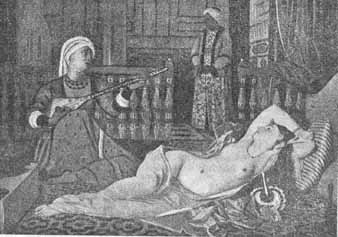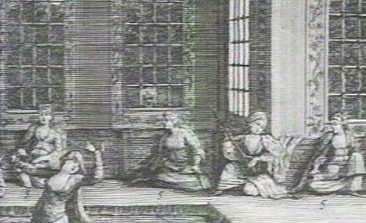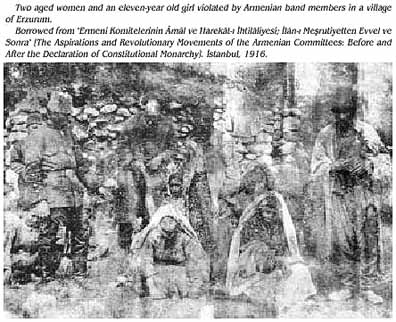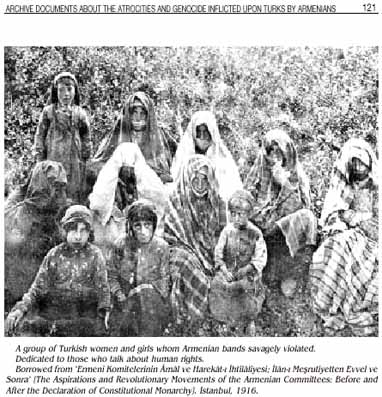|
|
Harems, a Byzantine tradition, take up a good part of
the "mysterious Orient" lore surrounding the times of the Ottoman
Empire. Other cultures also have had harems.... such as Cambodia, China,
Bengal... some putting the Ottoman harem to shame. For example, India's Mughal
emperor, Akbar, was reputed to have had 5,000 women in his harem; a Sassanian
king might have had as many as 12,000.
As far as I know, the only harem that existed in
the Ottoman Empire was the Sultan's. Ordinary Turks did not have harems. Aside
from the one and only imperial harem, it is said some powerful men also
participated in the institution, which would not be hard to believe. However,
this possibility goes for harems throughout the world, and I haven't come
across evidence of private harems in the Ottoman Empire. Especially not during
its last, comparatively "modern" phase in the early 20th Century...
when the old traditions did not hold the importance they once did.
Perhaps people confuse the practice of polygamy with
harems... an Islamic practice that was largely phased out by the 19th and 20th
centuries. Rear Admiral Colby M. Chester reported in 1922:
The harem has vanished out of Turkey, and there are
fewer men with plural wives than there are married men with mistresses in the
United States.
(More of the admiral's thoughts on Turkish polygamy.)
The harem that the admiral was referring to was THE
harem, I presume... the royal harem of Topkapi that vanished, along with the
sultan that made use of it. What was the truth behind this one and only harem?
(After preparing this page, I came
across the most revealing insight as far as what is referred to as the generic
meaning of "harem" in the Ottoman Empire.... written by a
missionary, of all people. What he describes is as far removed from what we
associate with harems as one can get. At page's bottom.)
 |
|
From
a painting in a French museum
|
Many of
those who have written about harems have reacted against the image of the
harem of unimaginable sexual delights. Western painters have often depicted
beautiful, firm-breasted odalisques lounging by pools or lying
expectantly in lavishly furnished boudoirs. Alev Lytle Croutier, Harem: The
World Behind the Veil (New York: Abbeville Press, 1989)
|
|
|
| From
the PBS program, ISLAM: EMPIRE OF FAITH |
NARRATOR: Contrary to the Western stereotype, it
was not the sultan's playpen... but lay at the center of dynastic power.
"The harem was the private quarters of the Sultan. We tend to think of the harem
as where the women lived; but what it means is, the place where you're not on display.
'Home,' is what it means."
NARRATOR: Islam allowed the sultan four wives... and many concubines.
"It was a system designed to produce heirs, is what it was. When you look into the
actual details of how these things were carried out, it was hardly anything terribly
erotic. The sultan did not have much choice in his selection of female companions. The
Sultan was not in the position to look around and say, 'I want her,' because his mother
would have a lot to say about it."

The quotes are by Victoria Holbrook, of Ohio State University.
Leslie Pierce, author of "The Imperial Harem:
Women and
Sovereignty in the Ottoman Empire" (Oxford, 1993) confirms this bubble-bursting
notion:
It was not sex, however, that was the
fundamental dynamic of the harem, but rather family politics. That is not to say that sex
— sexual desire, the sexual act — was absent as an animating force within the harem,
but it was only one of several forces, and for most of the period examined here, one of
relatively little importance.
|
"Harems," as related to the Armenian
"Genocide"
|
During my research for this site, I have lost
count of the number of allegations of how the nefarious Turks kidnapped the
prettiest girls of the relocating Armenians, for placement in "harems."
WHAT harems!? Usually, these reports are by missionaries with the nuttiest
imaginations... and missionaries and Armenians who are behind such reports are
motivated by the following:
1) Exploitation of ignorance in the West
regarding the mysterious ways of the Orient, and
2) Their outrage over decent, Christian women
being violated by "The Lustful Turk," a dirty and inferior race.
Did the roving bands that attacked some
Armenians on the march (who were not adequately protected by the gendarmes) rape
women? If men were acting like murderous animals, you can bet rape was among their
crimes. Were women taken away, for the use of further sexual slavery? No doubt.
However, I don't think the word "harem" enters into this scenario.
Otherwise, the Armenians who raped Turkish women when the Armenians were doing the
pillaging would also need be described as furthering their "harems," which
would be a ridiculous way of describing the situation.

During war time, unfortunately, the raping of
women becomes part of the picture... especially when irregular fighters and not
professional soldiers are involved. (Not to say the notion of "civility"
would go hand-in-hand with professional soldiers... that would probably be more of
an oxymoron.) For a page out of the Orthodox rule book, we need look no further back
than the behavior of the Serbs during the Bosnian conflict. Rape was a purposeful
tactic to chip away at the foundation of Bosnian culture, since Moslem women carry
that special stigma of being violated. (In other words, because of religious
trappings, their shame is monumental... as they are no longer "pure."
That's another story in nonsense, but it's just the way things are with many
Moslems; certainly, this is not an exclusive view among fundamentalists of all
religions, although Bosnian Moslems were far from fundamentalist. This is more of a
cultural, rather than a religious, concept.) Certainly, less modern Turkish women of
the First World War era were even more susceptible to such devastation... and you
had better believe the Armenian goons took full advantage of the situation. Here is a page from the more recent "rape"
practice out of the Orthodox rule book, to refresh your memory.

|
| A Mormon Missionary's Thoughts on "Harems" |
Mormon missionaries to the Ottoman Empire were often at
odds with their Protestant counterparts, and "the resentful attitude of their
compatriots must have diverted the Mormons to develop a better understanding of the Turks
for their recorded impressions do not bear the bitterness viewed in those of the American
Protestant missionaries.* " For example, below is a passage reflecting Missionary
Tanner’s impressions of the Turks, titled “Who Can be So Polite and Courteous As a
Turk” from History of the Turkish Mission (Elder Tanner, soon after his arrival in
Istanbul expressed his opinion about the Turks as “After all, they are the most honest
and moral of the Orientals. Like the Mormons, however, they have been wonderfully
misrepresented!" Millenial Star, June 22, 1886):
"I have often wanted to write you something about the domestic life and institutions
of the Turks, but I have been among them only about eight months, and I did not wish to
expose myself in a nonsensical way about people much talked of, and I am thus far
convinced grossly misrepresented. During odd moments, and by way of change of work as a
rest, I have read some eight volumes on the peoples of Turkey —The Turkish harem —
meaning the “holy”, is an object of much comment. The “haremlik” is the women’s
apartment, and the “selamlik” is the men’s apartment. The harem is not an
institution of polygamy, but a religious or race institution, and belongs to every
household. Polygamy is little practiced in Turkey, still it is an acknowledged
institution. All women wear a veil that conceals most of the face except the eyes, though
among many of the modern beauties it is so thin — made of such light muslin — that the
features can be distinctly seen through it. The Turkish woman by no means is a slave;
indeed she enjoys many more privileges in her harem than European women do in their homes.
Like many of their European sisters, they have a mind of their own and they are not afraid
to let it be known. But Turkish women do not associate in any way with men, except
their immediate relatives or husbands. ........... free association of men and women as
among the Europeans is unknown to the Turks....... The men have their gatherings and
amusements to themselves, and the women, likewise. If there is any truth whatever in
the saying that “Virtue is the absence of temptation”, the Turks are vastly superior
morally to the Europeans. I have formed the acquaintance of a German foreign
correspondent of Berlin, Hamburg and Vienna newspapers. He has been in this country a
great number of years, and has lived in Turkish families. His ideas, though embodied in
those of most Europeans of considerable experience here with whom I have talked, are
probably the most definite and best formulated. He has repeatedly asserted that the Turks
are vastly more moral respecting women than Europeans. His theory is that if the Turks
had more of that passion which, while it has developed Europe intellectually, has made its
moral status so low, they would be superior to what they now are. A few of the Turks,
however, practice polygamy, and that furnishes the literary artist materials to paint all
sorts of pictures. Probably no city in the world presents on its surface a worse spectacle
of fallen women of Christendom and Judaism than this. One often hears stories of the
grossest immorality of the Turks, and he hears them just as often contradicted. There
are many curious customs among the people here, and they furnish literary men and
newspaper correspondents, sto[p]ping a few weeks here, stuff for many silly and
nonsensical stories. You know there is considerable political speculation about this
country, and there are men here, politicians, who have made in the past and expect in the
future to make money out of European interferences. There are many things I cannot praise
among the Turks in their administration of affairs; but because A lets the weeds grow up
in the garden, it is no excuse that B should rob him of it. The Turkish Question, or the
Eastern Question as it is more generally called is weak Turkey. The Greeks want European
Turkey, The Russians would like Constantinople, and England is planting strong interests
here. The Germans are strongly represented, and Bismarck to-day has his fingers deepest in
the pie of Turkish politics, and his influence is great with the government. England
has been a greater enemy to Turkey than Russia. Russia is our avoved enemy in her
attempts to enforce her pan-Slavic schemes, but England has been an enemy in the
disguise of a friend — has inflicted internal wounds that are more difficult to heal
than external ones inflicted by Russia.” [7]
(1886 July
31, SLC/CRmh14250 Vol.I, Turkey Mission; from the fine article, *
SOME ABSTRACTS FROM THE MORMON MISSIONARIES ABOUT THE TURKS AND ARMENIANS, by Professor
Seçil KARAL AKGÜN, History Department, Middle East Technical University)
|
"Actual Life in
the Turkish Harem"
|
"Actual Life in the Turkish Harem" is
a booklet written by Vahan Cardashian in 1911. Cardashian was the poster boy for
Armenian deception and dishonesty, when he manipulated minds as a lawyer in the
United States, going so far as to even disloyally blacken the reputations of great
Armenian friends such as the Rev. James Barton and even Pres. Woodrow Wilson, when
they would no longer prove as "useful." (Cardashian would write a future
booklet, WILSON, WRECKER OF ARMENIA).
But here, even with the incidental touches of
bias that one has come to expect as a minimum from Turk-related publications in the
West, Cardashian gives a fair accounting of what "Harem" means. And it has
nothing to do with the Imperial Harem, or the notion that multiple women may be
collected as sex slaves in Turkish homes... the common accusation of the propaganda
from the period. That is, the notion of Christian Armenian and Greek women having
been abducted so that the sons of the sheik may have their lecherous ways with them.
|
| Countering the omnipresent "Harem" accusations |
The following is from Kamuran Gurun's "The
Armenian File":
In 1922 in the League of Nations it was claimed that hundreds of
thousands of Armenians and Greek children and women were still hidden in the `harems' in
Turkey. We quote the following passage from a brochure published by the Ministry of the
Interior:
After the Armistice the Ottoman Government spent more than 1,150,000 liras, and employed
hundreds of officials to return the Greeks and Armenians to their previous areas of
residence from the regions they had been transferred to. The procedures involving the
transfer of these people to their homelands, and returning to them their movable and
immovable properties, have been carried out through joint delegations formed by British
officers appointed by the British High Commission, Ottoman officials, and one member of
each of the interested nations. These delegations, whose number exceeded 62, formed by
British and Ottoman officials, which were sent to all parts of the country, acted with the
utmost attention and care. Even women who had married Muslim men of their own accord were
summoned one by one, and were asked again if they had consented, and those who declared
that they were pleased were left to their wishes. In the `harems' or orphanages of
Istanbul there were not hundreds of thousands of Armenian or Greek children and women,
there are not even two children who remained. While there are no remaining Armenian
children, some Muslim children, asserted to be Armenian, are still in Armenian orphanages,
even though their mothers and fathers are known to be alive.
Then, how is it possible that thousands of Armenian children, as it is claimed, are still
in the presence of Turks? How can the League of Nations, which does not have the legal
character of an executive power, and does not have an organization or the means to
investigate the actual situation in depth, conceive of the existence of children and women
whom the police force, the joint delegation, and the high officials of the Entente Powers
in Istanbul were unable to find?
For those who are somewhat aware of the actual situation, the matter is quite simple.
Because, if an American historian, who has been in Turkey for more than thirty years, and
who is at present a member of the Executive Committee of a Benevolent Society in Istanbul,
can try to find (only a week ago) a slave market in Istanbul where girls and women are
sold for money, then the report and speech reminding one of the Arabian Night Stories,
made by Mademoiselle Vakaresko of Rumania, who does not know Turkey, who constantly looks
at Turkey from the perspective of the Armenians and the Greeks, and who is influenced by
their exaggeration of violence, must not be considered strange.
How can it be explained that this issue which has escaped the attention and the
investigation of the officials, the official and non-official organizations of the Great
Entente Powers in Istanbul, was able to be detected only by Mademoiselle Vakaresko who
resides in Switzerland. (117)
Halide Edip makes an interesting observation about the children in the orphanages.
...Taking the Armenian children from the Turkish orphanages was becoming a tragic sight. .
. . A committee was founded, presided over by Colonel Heathcote Smythe, and it was
attempting to find the Armenian children and separate them from the Turkish children. They
had rented a house in Shishli (a quarter of Istanbul). The majority of the central
committee which was to separate the children were Armenians. Nezihe Hanim, General
Secretary of the womens' branch of the Red Crescent, had been invited to represent the
Turks. . . . When children were brought from the orphanages in Anatolia, to Istanbul, they
were sent to the Armenian church in Kumkapu, and there they were claimed to be Armenian.
Some children tried to escape, but were caught and brought back.
It was a day when I had gone to visit Nezihe Hanim. Two frightened children came into the
room, one was limping and the other had been wounded in the head . . . they had come from
an orphanage and had been brought to a church. They had strongly resisted being considered
as Armenians, as the Armenians had killed their parents. They had been severely beaten,
but had succeeded in escaping. They were crying, they were pleading to be protected, not
to be sent back. . . . Nezihe Hanim called a few journalists and requested that they be
brought to Mr. Ryan, the head translator of the British Embassy. . . . Although it was
known how much hatred he had against the Turks, Nezihe Hanim thought that he would be
compassionate in the presence of these two innocent and desperate children. . . I later
heard that when these two children were speaking, an Armenian official entered the room to
say something to Mr. Ryan. One of the children screamed ‘this was the man who beat and
kicked us'. The man was a member of the delegation in the Church of Kumkapu. . . .
The pain of this little creature affected me very much. For me he symbolized the desperate
Turkish nation. He was small and weak. (118)
(For a fuller version of the later passage,
see here.)
117 Cemiyeti akvam ve Turkiye’deki Ermeni ve Rumlar, Dahiliye Nezareti Muhacarin Kalem
Md. Nesriyat No. 6 (Istanbul, 1922), p. 14
118 Halide Edip, The Turkish Ordeal (London, 1928), pp. 16-18
|
|